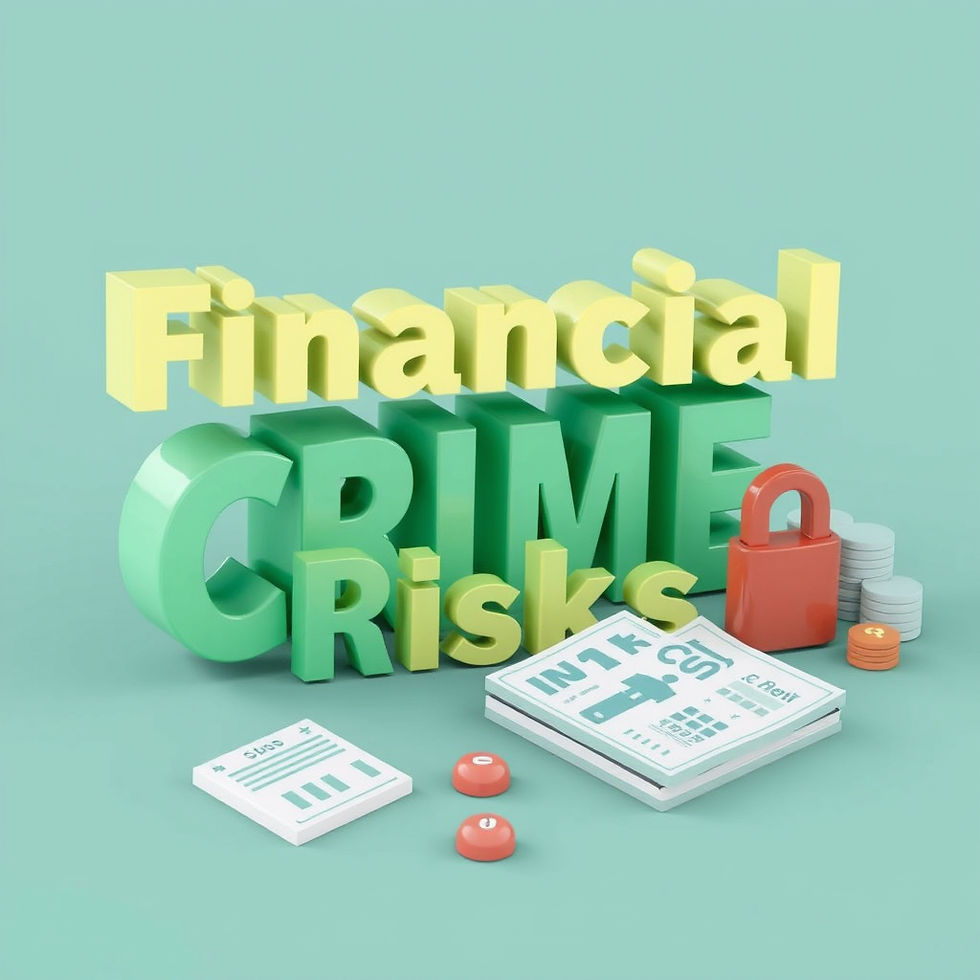- UGR Team
- Jan 16, 2023
- 3 min read
As we move into 2023, the landscape of financial crime continues to evolve, presenting new challenges and risks for businesses, financial institutions, and regulators alike. Financial crime encompasses various illegal activities such as money laundering, fraud, corruption, terrorist financing, and cybercrime, among others. These illicit activities pose significant threats to the global economy, financial stability, and trust in financial systems. In this blog, we will explore the emerging trends in financial crime that are expected to shape the landscape in 2023.

Increased Cybercrime Threats: With the rapid advancement of technology and the growing reliance on digital channels for financial transactions, cybercrime is expected to be a major concern in 2023. Cybercriminals are constantly devising new and sophisticated techniques to target financial institutions, businesses, and individuals. Cyber threats such as ransomware attacks, data breaches, and identity theft are anticipated to rise, posing significant financial and reputational risks. It is crucial for organizations to invest in robust cybersecurity measures, including regular risk assessments, employee training, and the use of advanced technologies to safeguard against cyber threats.
Focus on Anti-Money Laundering (AML) Regulations: Money laundering remains a persistent challenge in the global financial system. Regulators around the world are expected to continue strengthening AML regulations in 2023 to combat money laundering and terrorist financing. Financial institutions will need to ensure strict compliance with these regulations, including customer due diligence (CDD), enhanced due diligence (EDD), and transaction monitoring. The use of technology, such as artificial intelligence (AI) and machine learning (ML), is also expected to play a crucial role in automating AML processes, improving efficiency, and detecting suspicious activities.
Emphasis on Environmental, Social, and Governance (ESG) Risks: ESG factors, such as climate change, social inequality, and corporate governance, are gaining increasing attention from regulators, investors, and the public. In 2023, financial crime risks associated with ESG will likely be in the spotlight, as criminals may exploit these issues for fraudulent activities, such as greenwashing, insider trading, and corruption in procurement processes. Organizations will need to consider ESG risks in their risk assessments, due diligence processes, and internal controls to prevent and mitigate financial crime related to ESG.
Heightened Regulatory Scrutiny on Virtual Assets: The use of virtual assets, including cryptocurrencies, continues to gain popularity, but it also presents significant challenges in terms of financial crime risks. Regulators are expected to enhance regulations and oversight of virtual assets in 2023 to prevent money laundering, terrorist financing, and other illicit activities. Organizations dealing with virtual assets will need to ensure compliance with relevant regulations, including anti-money laundering (AML) and know-your-customer (KYC) requirements. Additionally, increased scrutiny on privacy coins and decentralized finance (DeFi) may also be anticipated, as these areas present unique challenges in terms of traceability and regulatory oversight.
Collaboration between Public and Private Sectors: The fight against financial crime requires collaboration between public and private sectors. In 2023, we can expect increased cooperation and information-sharing between governments, regulators, law enforcement agencies, and the private sector to combat financial crime. Public-private partnerships, joint investigations, and intelligence-sharing initiatives are expected to gain momentum, as stakeholders work together to identify and address emerging financial crime risks.
As we move into 2023, the landscape of financial crime is expected to present new challenges and risks for organizations, financial institutions, and regulators. Cybercrime threats, focus on AML regulations, emphasis on ESG risks, heightened regulatory scrutiny on virtual assets, and collaboration between public and private sectors are some of the key trends that may shape the financial crime landscape.



